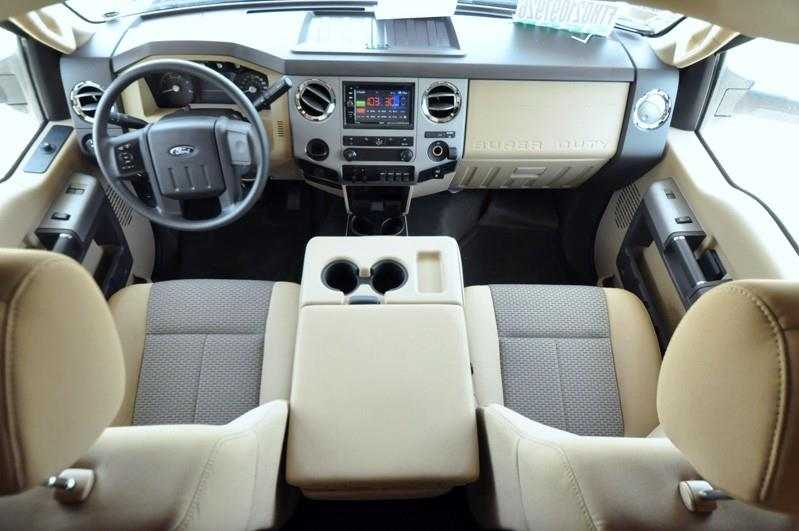It is getting to be the time of year when many folks are migrating to their winter grounds. For many people, the long drives between locations can contribute to back pain, making for cranky travelers.
These tips will help keep your spine in a better place and your voyages pain-free.

Don’t let seat time get the best of you. (Photo by IRV2.com member loftygoals)
Hydrate.
There always seems to be a delicate balance between keeping well-hydrated and having to stop frequently for pit-stops along the way, but staying hydrated by drinking plenty of water (or non-caffeinated drinks) keeps your tissues, including the discs between your vertebrae, supple and plump.
Dehydration can cause discs to compress and shrink, which can pinch nerves, leading to pain and other spinal problems. It is estimated that 10% of disc fluid loss happens within the first two hours of driving, so drink up and plan on stopping when you need to.
Properly adjust your seat.
Sitting for long periods of time can compound back problems quickly, particularly when you add vibrations from driving over the hours. Maintaining good back alignment while driving can help.
Keep in mind that your spine wants to stay in an “S” shape, not a “C” shape. If you find that you are sitting hunched forward into a “C” shape, you may need to adjust your seat.
Using a lumbar support to allow your lower back vertebrae to bend slightly forward can help reduce stress on your lower back. Angling the back of the seat just a few degrees backward can also help with proper spine alignment.
Think about your posture.
Using your postural muscles of your trunk and core can also help protect your spine. You don’t have to become a Pilates expert, but moving your posture to the front of your mind can help build core strength over time.
Sit with your feet flat on the floor with 90-degree angles at your ankles, knees, and hips. Imagine you have a ponytail hairstyle, and someone is gently pulling upward on your ponytail.
This moves the back of your head up, brings your chin toward your chest, and lengthens your spine. Keep your shoulders relaxed and gently pull your shoulder blades together and downward along your spine.
Try to keep your shoulders over your pelvis, not thrust forward or backward. Engage your abdominal muscles to slightly contract, pulling the front of your ribcage slightly toward your pelvis.
Imagine that the zipper on the front of your trousers is very cold, and you don’t want to have your belly touch the cold zipper.
Take frequent breaks.
Ideally, you should stop every 2 hours along your drive to allow your back to stretch and your muscles to move. Doing some gentle stretches and mild exercises can help circulate your blood, wake up your muscles, and re-align your spine.
It doesn’t have to be a long stop—even just a few laps around your rig and some arm circles can help. If you are hydrating like you should be, you probably will want to stop more frequently anyhow.
Have a squat.
It sounds strange, but squatting is a great way to rest your back and gently stretch out the vertebrae in your spine, relieving back pressure. For many, squatting can feel awkward at first, so you may need to start by lying on your back and pulling your knees up to hug into your chest.
Remember to keep your feet flat on the ground and a hip-width apart. Allow your knees to spread wide apart. Gently stretch your neck toward the ground to feel the stretch through the whole length of your spine.
Hold that position for 20-30 seconds. You can also try hanging on to the bumper of your rig, and leaning gently backward toward a squat to decompress your vertebrae.
Use a tennis ball.
A tennis ball (or racquetball) can provide relief for painful backs while driving. You can place the ball between your body and the seat wherever the painful spot is, and gently press and roll into the ball for a massage. Moving the muscle tissues along your back helps to relieve spasms and feels good.
Stretch at the end of the day.
After the day’s drive is over, take a good 10 minutes of stretching to allow your back muscles to relax and spine to decompress as an antidote to all the sitting you have done.
Be sure to stretch in all directions: forward, backward, left, right, twisting left, and twisting right. Be sure not to bounce in your stretch, and keep it gentle. Hold each stretch for 20-30 seconds, and be sure you keep breathing.
You can also try using a Yoga Block to provide a good stretch. (Always consult your doctor beforehand for appropriate stretches.)

Thanks, heading out on a long drive tomorrow; will definitely try at least some of these!
Just got back from a four day, 10 hrs/ day drive home and definitely needed these before I left. With a heavy headwind, wrestling an RV sure can make an uncomfortable pressure buildup in shoulders and neck. I’ll keep these tips in mind for next trip. Thx.
I have found that if I sit with my shoulders against the seat and my hands positioned on th bottom of the steering wheel it helps my back a lot..
I suffer with spinal stenosis and sitting is the worst thing you can do if you have back problems.
Best plan is to sop a lot on your trips.
Walk around during these stops.
My plan whenever I am on an extended RV trip is to limit daily driving to 300 miles or less….enjoy the trip at a slower pace and give your back a break from
extended sitting .